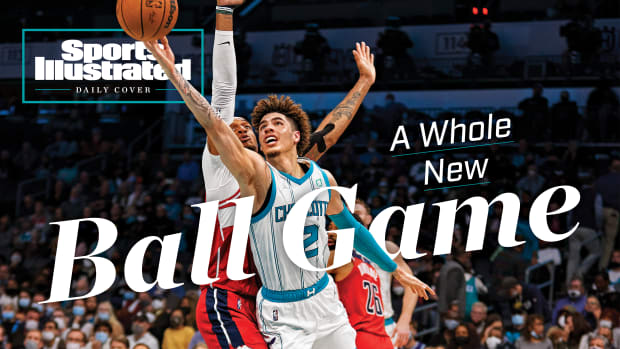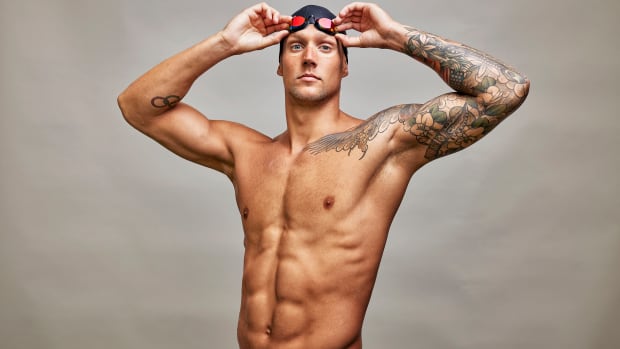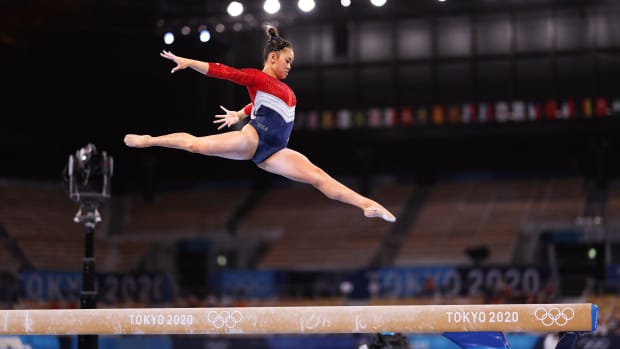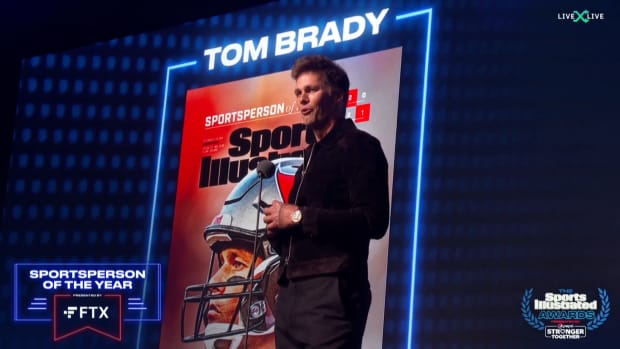Rachael Denhollander's Courage to Speak Out Will Have a Lasting Impact
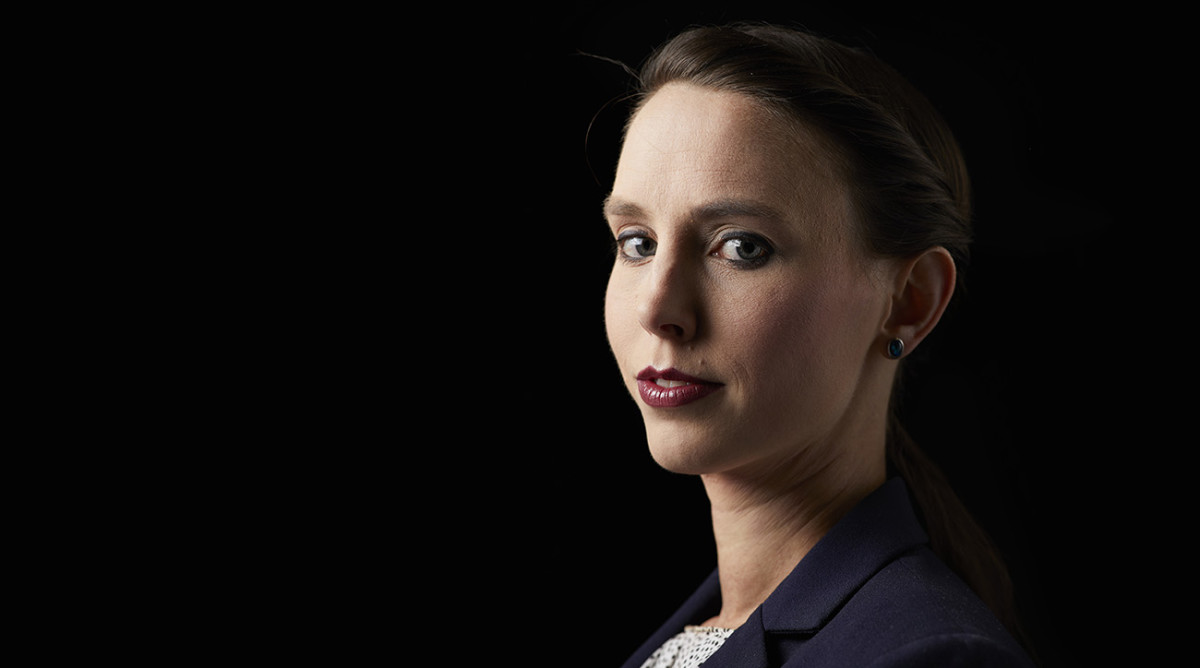
This story appears in the Dec. 17-24, 2018, issue of Sports Illustrated. For more great storytelling and in-depth analysis, subscribe to the magazine—and get up to 94% off the cover price. Click here for more.
By the time she wrote the email that would reveal the biggest sexual abuse scandal in sports history, Rachael Denhollander already knew what awaited. She knew she would face at least two institutions that wanted her to shut up. She knew she would sit in cold courtrooms and recount the details of the worst thing that ever happened to her. She knew she would have to strip herself of the protective coating she had built up over a decade and a half and expose the raw places, only to hear that she had misinterpreted what happened at a routine doctor's appointment ... that she was trying to ruin a good man ... that she must be collecting kickbacks from lawyers. She knew that her life would be nothing like the one she had imagined.
And she was right. "Everything I have been concerned about has come to fruition," Denhollander says.
The only thing that surprised her is that Larry Nassar actually went to jail.
Denhollander, 33, sits in a café near her Louisville home, comforting her fussing infant, four-month-old Elora, whose middle name—Renée—is a tribute to Andrea Renée Munford, the detective who led the investigation into Nassar, the disgraced USA Gymnastics and Michigan State osteopathic doctor. Once anonymous, she is now occasionally recognized, especially around East Lansing, but no one bothers her today.
Denhollander was a low-level, 15-year-old gymnast with back pain when her mother landed an appointment with the renowned Nassar in 2000. In five sessions over the course of a year, she says, he penetrated her with ungloved hands and rubbed her breasts and genitals. He positioned himself so that her mother, Camille Moxon, could not see what he was doing, and he did it with an ease that convinced Denhollander she was not his first victim. In fact, she would learn he was accused of abusing more than 500 athletes over two decades, including Olympic gold medalists Simone Biles, McKayla Maroney and Aly Raisman.
As Denhollander grasped what had happened to her months later, she considered what would happen if she, a teenage girl, reported him, a respected doctor. No one would believe her, she thought. When she told her parents, they supported her decision not to involve police, but they insisted she find an outlet for her pain, a suggestion she now credits with her recovery. So she recorded her feelings in a journal and began amassing a dossier documenting the abuse. That helped when, in 2016, she went public to The Indianapolis Star, becoming the first to attach her name to a complaint.
Denhollander seems a triumphant figure today, but she has weathered attempts by USAG, Michigan State, even law enforcement to downplay their liability. Former USAG CEO Steve Penny was charged in October with tampering with evidence. William Strampel, one of Nassar's bosses at MSU, has been charged with negligence for allowing Nassar to continue to prey on patients. And the Justice Department is reportedly investigating whether the FBI covered up allegations. Denhollander isn't proof that the system succeeds. If anything, she succeeded despite the system.
"I don't think anyone else could have done what she did," says her husband, Jacob, who is a Ph.D. candidate at Southern Baptist Theological Seminary. "She had patience and communication skills.... Insofar as Larry Nassar is in jail, it's wonderful. But it took a singular woman, a detective who wouldn't be snowed, a prosecutor dedicated to the case, a judge who let people speak and 500 women."
The most stirring 36 minutes in sports in 2018 came on a 27º January day in Lansing. In Courtroom 5 of the Ingham County Courthouse, Denhollander softly, but fiercely castigated Nassar and his enablers. Two months earlier the doctor had pleaded guilty to molesting seven girls. Judge Rosemarie Aquilina allowed all of his victims to make statements at the sentencing hearing. Over seven days, 156 spoke. Denhollander went last.
"How much is a little girl worth?" she asked repeatedly.
Denhollander was talking about 17-year-old Jessica Thomashow, who told the gallery that Nassar had assaulted her "before I had braces, and when I still played with my American Girl dolls." About 26-year-old Kyle Stephens, whom Nassar began molesting when she was six, in his own home. About Chelsey Markham, who took her own life, at 23, in 2009, after a decade of struggling to grapple with Nassar's abuse. And about herself. (Aquilina would hand him 40 to 175 years in prison, to be served after the 60 years he received in federal court for possessing 37,000 images of child pornography.)
Denhollander was seven the first time someone touched her inappropriately. He was someone she knew from her church. When she told her parents years later, it confirmed their suspicions. They had seen signs the man might be grooming her for future abuse and had gone to church elders. Some of them viewed the parents as making baseless accusations.
Christine Blasey Ford Introduces Rachael Denhollander as SI's Inspiration of the Year
"You just see," Denhollander says now. "Once you are attuned to it, you see how people talk about abuse, you see how they respond to survivors. You see what happens when an accusation is made against someone in their own community, and the way they are treated."
Denhollander had always been clear-eyed and cautious, even as a child. After being homeschooled all her life, she earned a law degree from Oak Brook College, a correspondence school. She felt certain she was not Nassar's only victim, that someone must have reported him. But if he had not been stopped, that meant those who spoke had been silenced.
Whenever she considered coming forward, she was confronted with her greatest fear: that he would win and know he was untouchable.
One morning in August 2016, Denhollander was rocking her teething infant daughter, Ellianna, when she came across a link on Facebook to an Indianapolis Star article that described how USA Gymnastics had failed to alert authorities of sexual assault allegations against coaches. Inspired, she fired off an email to a tip line linked at the bottom of the story.
"I have seen little hope that any light would be shed by coming forward, so I have remained quiet," she wrote. "If there is a possibility that is changing, I will come forward as publicly as necessary."
Reporter Mark Alesia fielded her tip. "It's really remarkable," he says. "So much of this story involved trying to convince people to share information ... but I can't remember a time when Rachael was reticent about something."
She knew that to accuse someone as prominent as Nassar, she had to seem credible. So she produced her dossier and freely revealed details about her abuse to reporters and then police. She carefully selected her outfits for on-camera interviews and for court appearances. Even her reactions left her open to scrutiny: Tears are the mark of a hysterical woman, but showing no emotion could sow doubt. And most important, she tried to seem accessible, so other survivors would feel comfortable reaching out to her. They are always her focus. They are why she sent that email.
"I didn't want anybody else to go through it," she says. "I wanted them to have a choice, how they came forward, and what they did. I didn't have that choice, but I wanted them to."
This is, of course, not strictly true. She could have chosen to confront her private demons privately forever. Instead she has chosen to shoulder other people's agony on a near-nightly basis, fielding calls from other survivors. She is involved in drafting legislation to extend the statute of limitations and is a party in a civil suit against Nassar, USA Gymnastics and others. She could have avoided all this if she had never written that email.
"Then I would have to live with that choice," she says. "I don't think I could have. I really don't think I could have. Because it was the right thing to do."
Denhollander believes all people are capable of redemption, but she still sees a lot of failure: politicians who seem more interested in holding on to their seats than eliminating the statute of limitations in sexual assault cases, church leaders who cover up abuse rather than root it out. And the assaults still haunt her. She cringed when obstetricians delivered each of her children, otherwise joyful moments marred by fear. In her nightmares it isn't Nassar who hurts her; it's others she trusts.
But for a person who has seen the worst in people, Denhollander has spent the last two years making an extraordinary bet on the best. People who really expect humans to behave poorly do not wake up every morning and try to fix the world.
She thinks often of the society she will leave her children: seven-year-old Jonathan, four-year-old Annaliese, three-year-old Ellianna and Elora. Jonathan is cautious like his mother; when he was a toddler, Rachael would take him to the playground and laugh as he listed all the hazards. Annaliese was fearless from the start. By the time she was 10 months old, she was teaching her big brother to explore and getting them both into trouble. Some days she wants to be a ballerina, some days an Air Force pilot, some days both. For Christmas she asked for a documentary on the pyramids of Giza. But recently she has expressed an interest in taking gymnastics classes. Rachael is inclined to let her.




